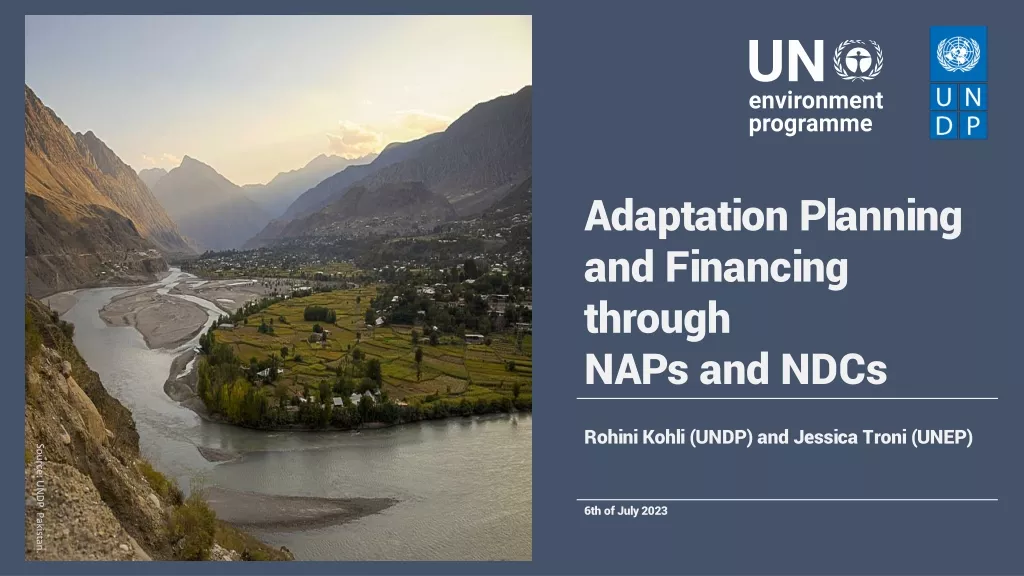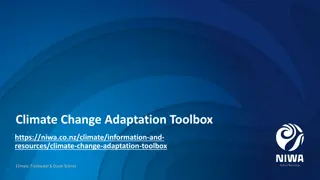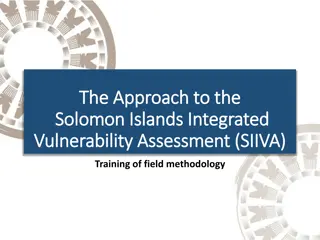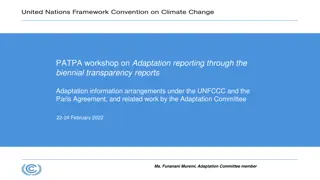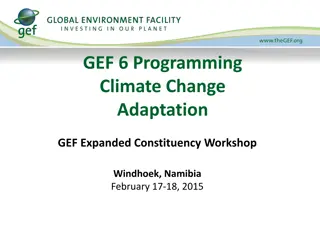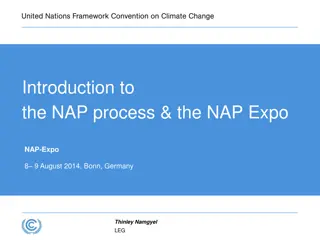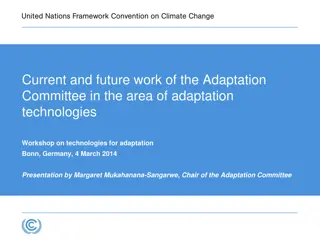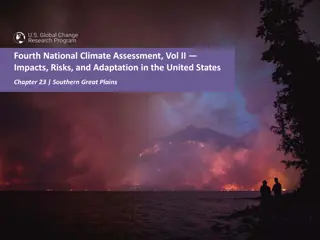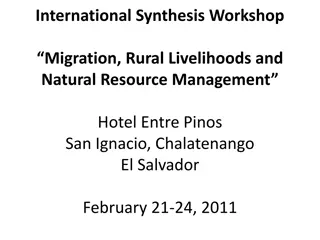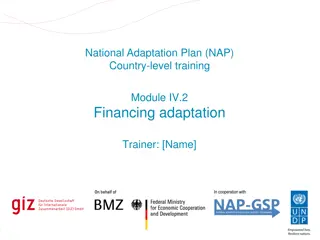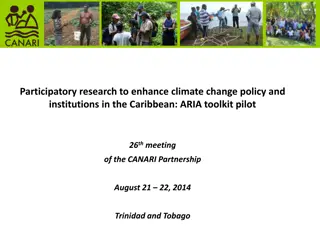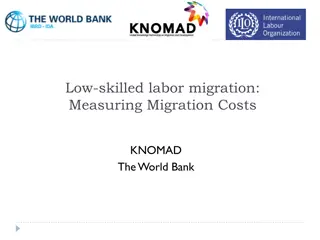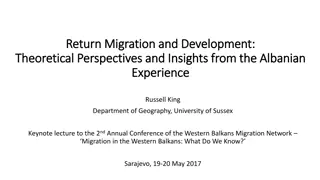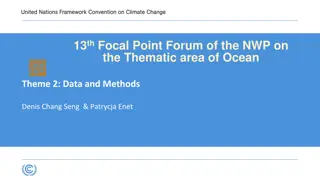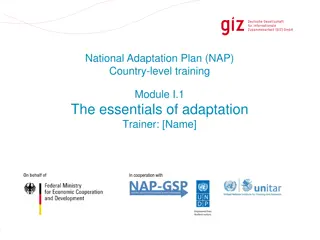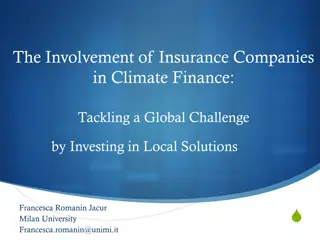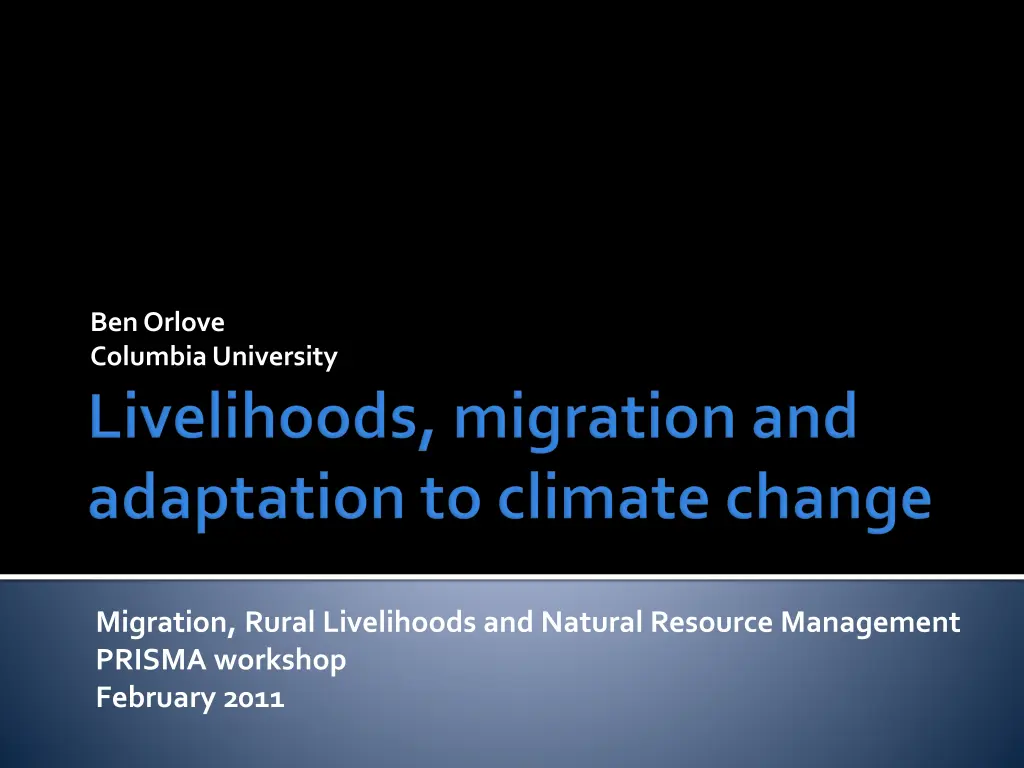
Exploring Interactions Between Migration, Livelihoods, and Natural Resource Management
Delve into the intricate relationship between migration, rural livelihoods, and natural resource management, considering economic, social, and environmental frameworks. Explore how these concepts intersect and provide guidance on viewing migration as an adaptation to climate change.
Download Presentation

Please find below an Image/Link to download the presentation.
The content on the website is provided AS IS for your information and personal use only. It may not be sold, licensed, or shared on other websites without obtaining consent from the author. If you encounter any issues during the download, it is possible that the publisher has removed the file from their server.
You are allowed to download the files provided on this website for personal or commercial use, subject to the condition that they are used lawfully. All files are the property of their respective owners.
The content on the website is provided AS IS for your information and personal use only. It may not be sold, licensed, or shared on other websites without obtaining consent from the author.
E N D
Presentation Transcript
Ben Orlove Columbia University Migration, Rural Livelihoods and Natural Resource Management PRISMA workshop February 2011
A brief exploration of the guiding concepts of the conference Migration Rural Livelihoods Natural Resource Management How do these three concepts interact with economic, social and environmental frameworks? What guidance does this interaction give us for considering migration as an adaptation to climate change?
Natural resource management Migration Livelihoods Space and nature environment Space and value economics Space and governance society
Natural resource management Migration Livelihoods Space and nature environment Movement Space and value economics Income flows Space and governance Networks Citizenship society
Natural resource management Migration Livelihoods Space and nature environment Movement Space and value economics Income flows Space and governance Networks Citizenship society Mobility Alternate concepts
Natural resource management Migration Livelihoods Space and nature environment Movement Space and value economics Income flows Space and governance Networks Citizenship society Mobility Refugees Alternate concepts
Natural resource management Migration Livelihoods Space and nature environment Movement Resources Space and value Income Property economics Income flows Space and governance Networks Citizenship Households Communities society
Natural resource management Migration Livelihoods Space and nature environment Movement Resources Space and value Income Property economics Income flows Space and governance Networks Citizenship Households Communities society Well-being Security Vulnerability Alternate concepts Mobility Refugees
Natural resource management Migration Livelihoods Space and nature Sustainable management environment Movement Resources Space and value Income Property Ecosystem services economics Income flows Space and governance Networks Citizenship Households Communities Commons State control society
Natural resource management Migration Livelihoods Space and nature Sustainable management environment Movement Resources Space and value Income Property Ecosystem services economics Income flows Space and governance Networks Citizenship Households Communities Commons State control society Well-being Security Vulnerability Post- consumerism Deep ecology Alternate concepts Mobility Refugees
How well do the following concepts fit together? Livelihoods Migration Adaptation to climate change Let s look at them two at a time.
Migration and livelihoods Migration is a part of many livelihood strategies. Many livelihood systems involve multiple activities in different locations, to optimize resource use and to reduce risk. This could be called mobility as well as migration. Patterns of mobility around the world are often very old, and structured in culturally distinctive ways. E.g., Pacific Islands, High Arctic, indigenous Andes
Livelihoods are an important part of adaptation to climate change. Climate change impacts livelihoods through: Gradual shifts in climate, water availability, sea level, vegetation and human health which alter productivity (trends) Increased hazards (extreme events) Changing livelihoods can constitute adaptations to climate change, by allowing people access to resources to complement the ones that are impacted.
If migration can be part of livelihoods And livelihoods can be a part of adaptation to climate change, Can migration be part of adaptation to climate change?
Reasons for saying yes: Migration can allow access to resources to complement the ones that are lost because of changing trends or extreme events. Many people are used to mobility. Migration can be coordinated at a regional, national or international scale.
Reasons for saying maybe, or no: Practicality: There are many difficulties to establishing new forms of migration. Scale: Migration seems more legitimate at smaller scales than larger scales. Household Community Region or ethnic group Nation World Many examples Difficulties with relocation after dam construction Concerns of Inuit, other indigenous peoples and coastal regions Concerns of island nations (Tuvalu, Maldives) Impossibility
Reasons for saying maybe, or no: Valuation: Economic resources are hard to replace; extra-economic ones are even more difficult. Control: Migration is widely understood as a voluntary process, but adaptation will require planning and coordination. It is difficult enough to make effective evacuation plans for hurricanes.
Indigenous pastoralists Livelihoods based on alpaca herds, which provide meat, wool, hides and fuel (dung) Livelihoods include mobility for trading (using the animals) and for wage labor Climate change: rapid glacier retreat in the last 40 years. Reduced water flow Reduced pasture Residents accept migration at individual and household level, but not at level of community or ethnic group. They raise objections of practicality, scale, valuation and control. They have strong attachments to their community and region.
Changes in the Qori Kalis Glacier, Quelccaya Ice Cap, Peru, are shown between 1978 (top) and 2002. The glacier retreat during this time was 1.1 km. Photo credit: Lonnie Thompson
dry season runoff 3.00 2.50 2.00 (m*3/sec) 1.50 1.00 0.50 0.00 1962 1999 2007/15 2015/25 2040/60 Source: H ggel et al. 2003, Assessment of glacier hazards and glacier runoff
Source: Bradley et al. 2006, Threats to water supplies in the Tropical Andes
100% 75% 50% 25% 0%
The mountains and glaciers provide the water which maintains the pastures. The pastures support the herds which support the herders. Individuals and households can move elsewhere, but they care for the herds and mountains for cultural as well as economic reasons. When some individuals and households move, the community survives. When all move, it does not survive.
How well do the following concepts fit together? Livelihoods Migration Adaptation to climate change For the herders in Cusco, who have experienced climate change for over a generation, they do not fit together well. Other groups may face similar difficulties.

